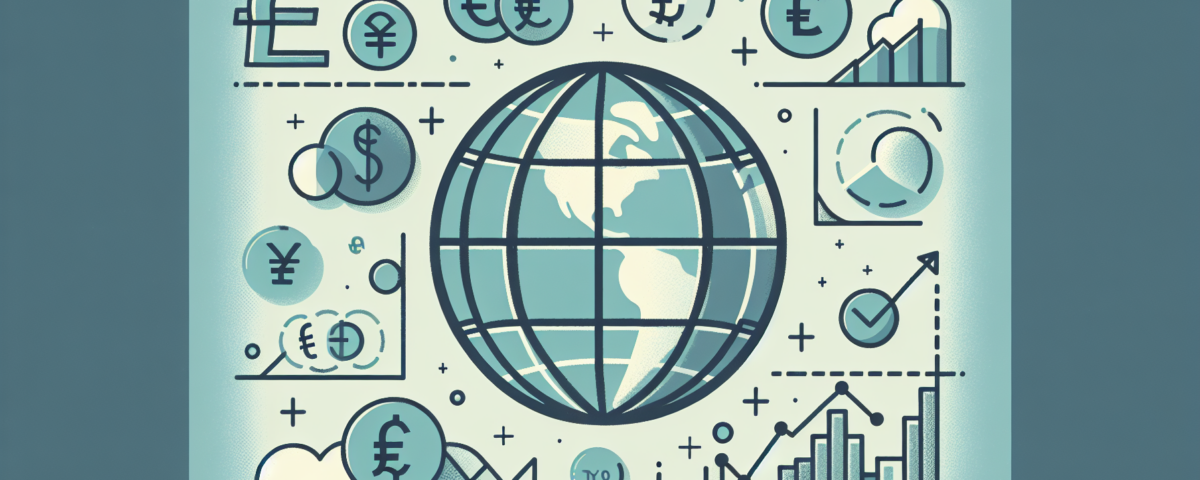
Navigating Tariff Turbulence: The Impact of Recent FX News on Global Trade
Tháng 4 8, 2025
Will Trump’s Tariffs Transform the Federal Reserve’s Monetary Policy?
Tháng 4 8, 2025Fitch Ratings Raises Alarm on Economic Consequences of New U.S. Tariffs
Fitch Ratings has recently voiced profound concerns over the economic repercussions stemming from new tariffs imposed by the U.S. government, which became effective on April 2, 2025. Aimed at enforcing reciprocal trade practices, these tariffs may inadvertently open the door to a series of economic challenges that could impact not just the U.S., but also the global economy at large.
Economic Growth Projections: A Worrisome Downturn
According to Fitch Ratings, the introduction of these tariffs is set to inhibit U.S. economic growth, with projections indicating a potential decline below the previously estimated growth rate of 1.7% for 2025. The tariffs are anticipated to drive up consumer prices while simultaneously squeezing corporate profits, leading to increased pressures on both businesses and households. As higher overhead costs trickle down, consumers may find themselves grappling with the burden of elevated prices at a time when their purchasing power is already being challenged.
Consumer Spending at Risk: The Tariffs’ Ripple Effect
The implications of these tariffs on consumers are particularly troubling. Fitch emphasizes that the increased cost of goods due to tariffs may significantly diminish real wages, ultimately suppressing consumer spending. As households feel the financial pinch, recession risks loom larger on the horizon. With disposable income under pressure from rising prices, the ability of consumers to engage in discretionary spending could dampen overall economic activity further, creating a cycle of stagnation that could be hard to break.
The Federal Reserve’s Conundrum
The newly imposed tariffs also create a complex dilemma for the Federal Reserve. As tariffs push prices upward, the central bank may find it difficult to implement interest rate cuts, which are typically used to spur economic growth during downturns. This constraint can limit effective monetary policy responses and could significantly hinder recovery efforts should the economic landscape worsen. The intersection of fiscal and monetary policies during this tumultuous time will undoubtedly demand close monitoring and strategic maneuvering.
Global Trade Dynamics: A Broader Perspective
While some Latin American nations may witness marginal gains from trade diversions resulting from the tariffs, Fitch notes that the overall outlook for global demand is expected to weaken. The sweeping nature of these tariffs minimizes potential beneficial trade adjustments, suggesting that many economies could face collective hardship. Specific countries in Asia, such as Vietnam and India, are projected to experience particularly harsh impacts, with high tariff rates threatening their established trade relations with the U.S. Furthermore, China’s President Xi Jinping convened top global CEOs to address these trade tensions, emphasizing the need for collaboration and international stability, indicating that despite U.S. tariffs, China aims to enhance partnerships and affirm its role in global trade. Read more here.
Market Response: Investor Sentiment in Flux
As anticipated, the financial markets have responded negatively to news of these tariffs, with considerable declines among companies listed on the S&P 500. This market reaction reflects a palpable concern among investors regarding the broader economic fallout. The losses experienced on stock markets have echoed sentiments from previous downturns, with some of the most significant dips since the early pandemic, underscoring fears about economic stability going forward.
A Cautionary Conclusion
Fitch Ratings cautions that, while the newly imposed tariffs may lead to a temporary reduction in the trade deficit, the long-term ramifications could be severe. Higher consumer prices, diminished corporate profits, and an escalating risk of recession collectively illustrate the complex and often paradoxical nature of trade policies. As the economic landscape evolves, it remains crucial for policymakers to navigate these turbulent waters carefully, weighing the immediate benefits against potential long-term drawbacks to ensure sustained economic health both domestically and globally.

